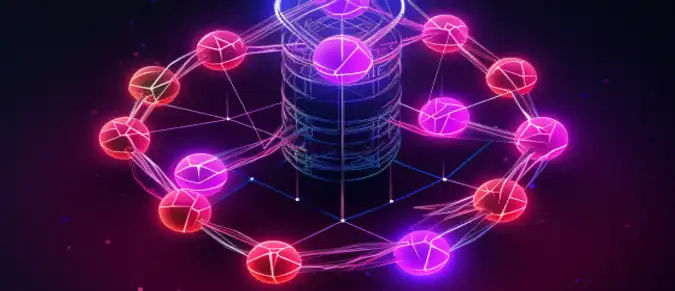Peer-to-peer networks (P2P) – are a type of networks where participants are equal and exchange resources directly, without intermediaries. This approach to network communication has gained popularity due to its decentralization and resilience to failures. In this article, we will explore the fundamental principles of P2P networks, their applications, and their significance in the modern world.
- History of P2P Networks
- Principles of Peer-to-Peer Networks
- Applications and Importance of P2P Networks

History of P2P Networks
The history of P2P networks begins with the emergence of the Napster program in the late 1990s. Napster became the first popular P2P platform, allowing users to exchange music files over the internet. This idea had a significant impact on the music industry, leading to numerous disputes and legal battles.
Shortly after Napster's appearance, other developers started working on alternative P2P platforms. One of the most well-known was Gnutella, introduced in 2000. It differed from Napster in that it operated entirely in a decentralized manner. Users could exchange files directly without intermediary servers, making Gnutella more resistant to blocking and censorship.
Principles of Peer-to-Peer Networks
The ideas behind P2P also had a substantial impact on the financial industry. The emergence of Bitcoin in 2009, based on blockchain technology, introduced a new level of decentralization in the world of finance. Blockchain technology enabled the creation of decentralized digital currencies and systems that functioned without the need for central banks or financial institutions. The main principles of P2P networks include:
| Characteristic | Description |
|---|---|
| Decentralization | P2P networks have no central control center. All participants are equal and exchange resources directly. This makes the networks resilient to failures and censorship. |
| Equality | In P2P networks, there is no hierarchy. Each participant has equal rights and capabilities. This promotes the absence of centralized control and the creation of democratic networks. |
| Self-regulation | P2P networks can independently manage and adapt to changing conditions. They can detect and circumvent obstacles, such as blockades and service failures. |
| Distributed Storage | Resources (files, data) in P2P networks are distributed among participants. This reduces the load on central servers and increases information availability. |
| Encryption and Security | Modern P2P networks provide data protection and information exchange using various encryption methods. This makes the networks secure and protected against unauthorized access. |
Applications and Importance of P2P Networks
P2P networks have found wide applications in various fields. P2P clients like BitTorrent allow users to exchange files (movies, music, software) without the need for central servers. This type of network is used for organizing video conferences where each participant contributes to data transmission.
Many blockchains, such as Bitcoin and Ethereum, are based on P2P architecture, making them decentralized and resilient. Additionally, this technology is used for shared computation and data storage, such as in distributed computing.
P2P networks play a crucial role in the modern information society:
- Accessibility and Resilience: They provide access to resources and information even in conditions of restrictions or network failures.
- Decentralization and Security: P2P networks help avoid monopolies and centralization of power, promoting privacy and freedom.
- Efficiency and Scalability: P2P networks can efficiently utilize resources and scale according to needs.
- Innovation: The decentralized nature of P2P networks fosters innovation in technology and business models.
P2P networks are an essential element of the modern information world. Their decentralized nature, resilience, and ability to exchange resources without intermediaries contribute to their significance in contemporary society.




